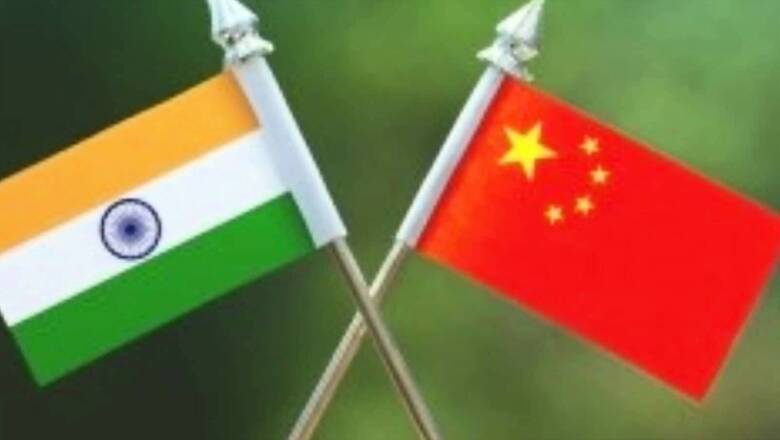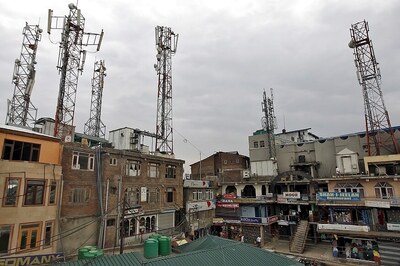
views
Tensions have eased off at one more point along the Line of Actual Control (LAC) in Eastern Ladakh with the agreement to disengage from Gogra Heights. In a press release, the Indian Army stated that all temporary structures created in the area had been dismantled, and troops of both sides had pulled back to their permanent bases. A key element of the agreement was that the LAC in the area would be strictly observed and respected by both, and there would be no unilateral change in the status quo.
Coming more than five months after the agreement at Pangong Tso, this is a positive step and could provide an impetus to resolve the standoff at PP-15, Depsang, and Demchok. The Army’s statement indicates that “both sides have expressed commitment to take the talks forward and resolve the remaining issues along the LAC”.
There are two broad approaches to tackle the remaining areas. The first is to discuss one sector after another, leaving the most contentious area of Depsang for the last. The second is to discuss all the areas together and hammer out a solution for simultaneous disengagement. Currently, the People’s Liberation Army (PLA) insists on a sector-by-sector approach, which is how the discussions are proceeding.
There is a view that this approach has at least resulted in some move forward in the disengagement process. Otherwise, the difficulties of finding solutions in areas like Depsang could have stalled the whole process. Comparisons are made with the Wangdung incident of 1986 and how it took nine years before it was resolved. Therefore, we should not become impatient but be prepared for the long haul. However, it must be pointed out that comparing the Wangdung incident with the current standoff is not entirely appropriate.
ALSO READ | At Kargil and LAC, A Lesson for Pakistan and China—Indian Military is No Pushover
In 1986, the military power differential between China and India was minimal, and in some areas, the advantage lay with India. According to World Bank data, in the two years following the Wangdung incident, India’s annual defence budget averaged $11 billion. Comparative figures for China are not available for this period, but in 1990 and 1991, China’s annual defence spending was approximately $10 billion. This indicates that in the late 1980s, the Indian military was in excellent shape to mount a vigorous response while the PLA’s options were limited.
The other major difference between the two situations is that after the initial tensions, the Wangdung crisis resulted in a diplomatic rapprochement and an agreement to negotiate a boundary settlement. Bilateral relations improved steadily following the visit of Prime Minister Rajiv Gandhi to Beijing in 1988. In 1993, an agreement was signed on the Maintenance of Peace and Tranquility along the Line of Actual Control in the India-China Border Areas.
In contrast, the ongoing standoff has led to a period of worsening relations between India and China. The Indian Foreign Minister S. Jaishankar has pointed out that “India’s relations with China are at a crossroads” and that “border tensions cannot continue with cooperation in other areas”. Until there is complete disengagement, followed by de-escalation, ties between the two countries will remain adversely affected.
There are clear advantages to a simultaneous discussion of the remaining areas. It dispels the lingering suspicion that while China could agree to disengage from areas like PP-15, it would continue with its presence in Depsang and deny us patrolling to large sections of the LAC, as they are now doing. This would leave the Indian Army in a disadvantageous position in this strategically important sector.
An early agreement would also set the stage for de-escalation and thinning out of the approximately 100,000 troops that were inducted by both sides when the crisis began last year. These additional forces will remain in place till India and China reach a final settlement on all the areas. Although the situation has remained under control, the presence of a large number of troops at high alert could result in local incidents escalating both horizontally and vertically in a short span of time. A long-drawn-out step-by-step disengagement process will keep this danger alive.
Even after the disengagement and de-escalation, a lot of effort will be required to bring in new protocols and agreements to maintain calm along the LAC. Previous agreements are no longer valid or useful. In a meeting in Moscow in September 2020, the Foreign Ministers of India and China had agreed that “as the situation eases, the two sides should expedite work to conclude new Confidence Building Measures [CBMs] to maintain and enhance peace and tranquility in the border areas.” These CBMs can only be discussed after the ongoing crisis is completely resolved.
It is clear that India is not going to dilute its demand for the PLA to withdraw from the areas that it had transgressed last year. However, a certain level of accommodation is now visible on both sides, which has led to disengagement at Pangong Tso and Gogra. It also appears that the disengagement is based on the principle of establishing ‘buffer zones’ in the disputed areas. Now that some common ground has been reached, it makes little sense for the PLA to continue with a stance that only delays the final resolution of a tense military standoff.
The author is former Northern Commander, Indian Army, under whose leadership India carried out surgical strikes against Pakistan in 2016. He is currently a Senior Fellow at the Delhi Policy Group. The views expressed in this article are those of the author and do not represent the stand of this publication.
Read all the Latest News, Breaking News and Coronavirus News here.



















Comments
0 comment